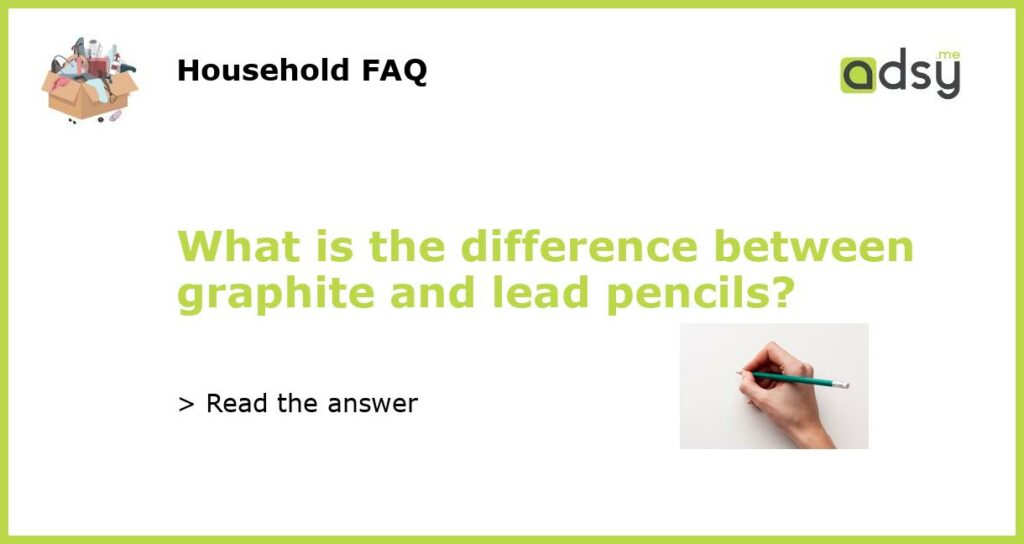What is the Difference Between Graphite and Lead Pencils?
Graphite and lead pencils are two popular writing instruments that have been used for centuries. While both pencils are commonly referred to as “lead” pencils, they actually contain different materials. Graphite pencils are made with graphite, a form of carbon, while lead pencils are made with a clay and graphite mixture. In this article, we will dive deeper into the differences between graphite and lead pencils.
Graphite Pencils
Graphite pencils are the most common type of pencil used today. The “lead” in a graphite pencil is actually a graphite and clay mixture that is encased in a wooden barrel. The ratio of graphite to clay determines the hardness or softness of the pencil. Graphite pencils are available in various hardness grades, ranging from the softest 9B to the hardest 9H.
Lead Pencils
Lead pencils, on the other hand, are made with a clay and graphite mixture that includes a small amount of actual lead. The term “lead pencil” is a misnomer, as lead has not been used in pencils since the 18th century. The clay and graphite mixture in lead pencils is typically softer than that used in graphite pencils, resulting in a smoother writing experience.
Differences in Writing Experience
The choice between graphite and lead pencils often comes down to personal preference and the writing experience desired. Graphite pencils are known for their versatility, as the range of hardness grades allows for a variety of line widths and shading effects. They are great for drawing, sketching, and fine lines.
Lead pencils, on the other hand, are preferred by many for their smoothness and darker lines, which can be ideal for writing and taking notes. The softer lead and clay mixture allows for more effortless writing, as the pencil glides smoothly across the paper. However, lead pencils may require more frequent sharpening than graphite pencils.
Applications
Graphite pencils are widely used by artists, architects, and designers for their ability to create fine details and shading. The range of hardness grades allows artists to achieve different effects and textures in their drawings. Graphite pencils are also commonly used in educational settings, as they are easily erasable and come in a range of thicknesses.
Lead pencils, with their smooth writing experience, are often preferred in offices and professional settings. They are also commonly used by individuals who write extensively, such as writers, journalists, and students. The darker lines produced by lead pencils can make text more legible and visually appealing.
While both graphite and lead pencils serve the same purpose of writing or drawing, they differ in the materials they are made of and the writing experience they provide. Graphite pencils, made with a graphite and clay mixture, offer versatility and a wide range of hardness grades. Lead pencils, made with a clay and graphite mixture that once contained lead, provide a smoother writing experience with darker lines. The choice between graphite and lead pencils ultimately depends on personal preference and the intended use of the pencil.






